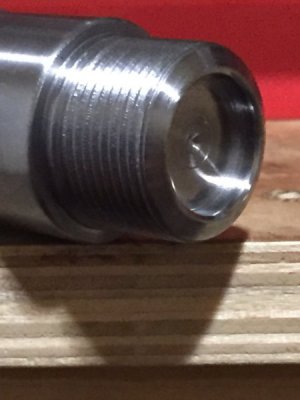- Joined
- Oct 16, 2014
- Messages
- 314
Tried cutting some flutes on my beautifully tapered barrel. Came out looking like a squirrel's tail blowing in the wind.
You may have chucked up a 1/4" ballnose (or so) and cut the grooves that way? Might be a little deflection there without a lot of carefully incremented passes.
Probably the most solid way is to set up in a horizontal with a nice 4" or 6" wheel doing the cutting. Might go a lot straighter that way. Of course, this might require justifying the purchase of another machine, too.
Short of that, it might be you'd want to get a stubby cutter. Take a regular jobber length and cut it back to almost hemispherical. That's about as rigid as that setup will get.
Wrat



